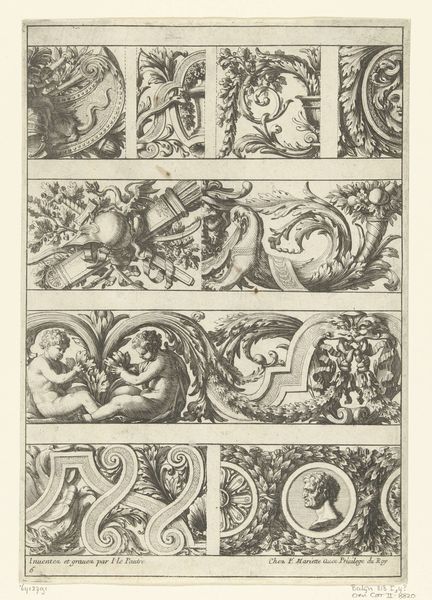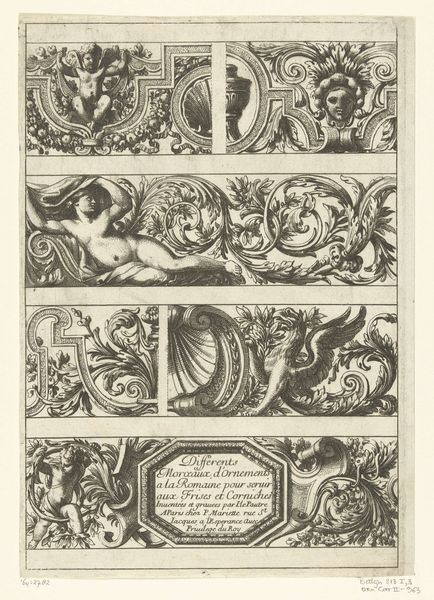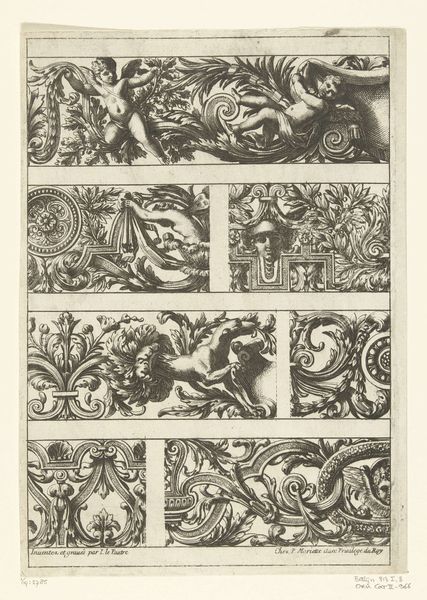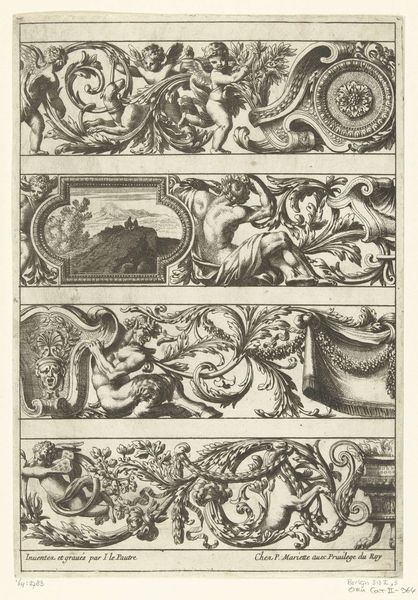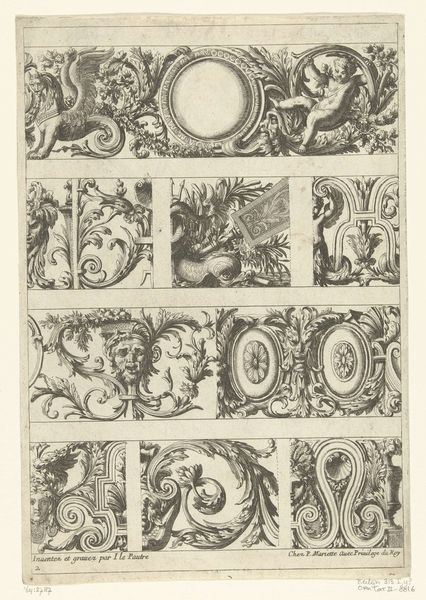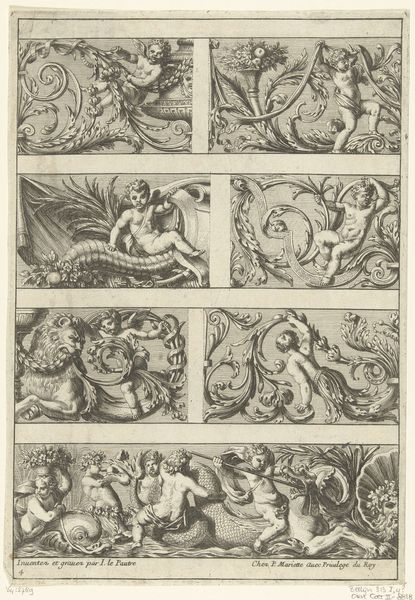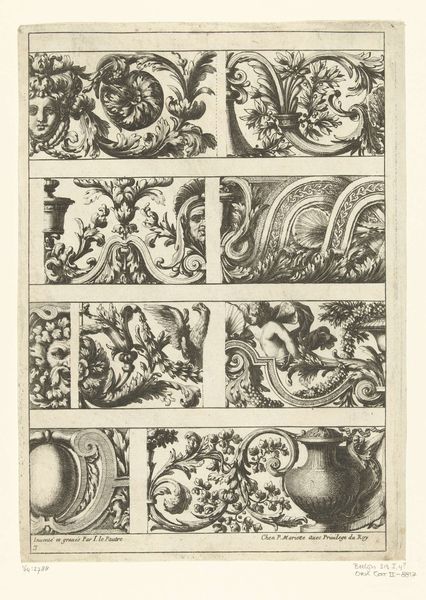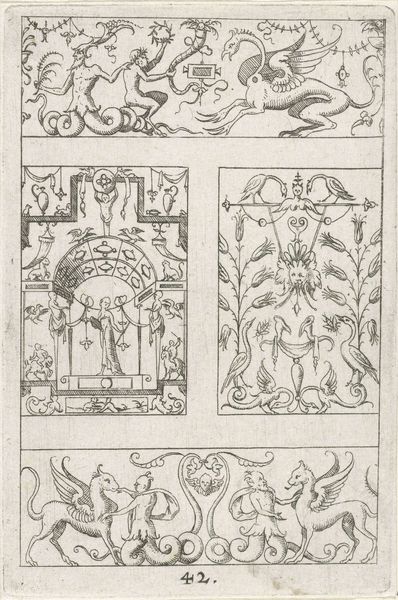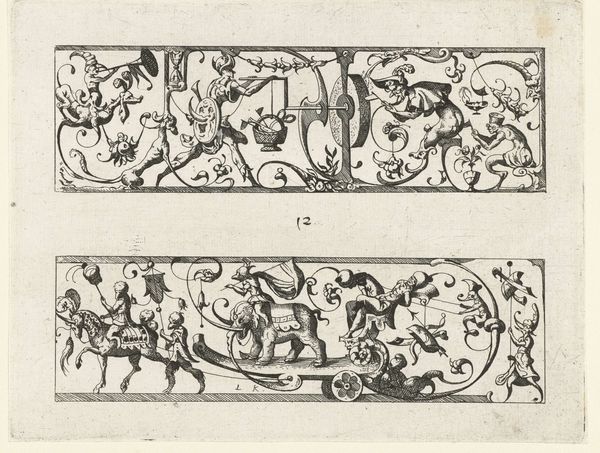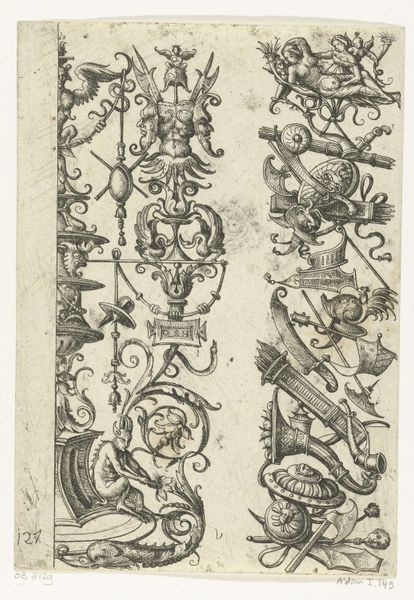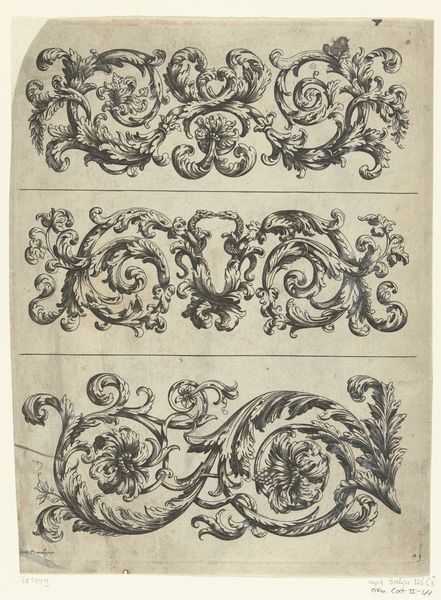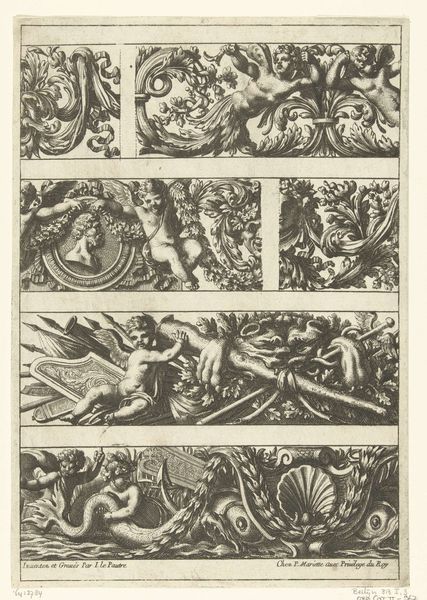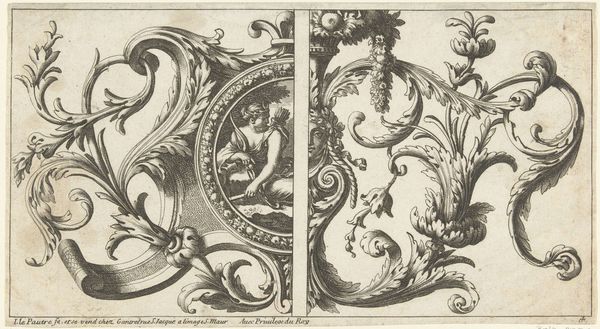
engraving
#
allegory
#
baroque
#
pen drawing
#
old engraving style
#
form
#
line
#
decorative-art
#
engraving
Dimensions: height 275 mm, width 188 mm
Copyright: Rijks Museum: Open Domain
Jean Lepautre created this print of four friezes in the 17th century, showcasing the era's penchant for ornate decoration. The image is dominated by motifs of cherubs, foliage, and masks, each carrying a rich symbolic load. Consider the cherubs, ubiquitous in Renaissance and Baroque art. Originally symbols of divine love, they evolved from pagan Cupids, demonstrating the classical world's enduring influence. Now, see how they reappear throughout art history: the foliage that evokes classical antiquity, and is a constant presence in Roman friezes and Renaissance paintings, symbolizing growth, life, and renewal. Look at how they morph and adapt, carrying cultural memory and emotional weight across time. Such symbols engage us on a subconscious level, triggering deeply ingrained associations and emotions. These motifs reflect the non-linear, cyclical progression of symbols, resurfacing, evolving, and acquiring new meanings across different historical contexts.
Comments
No comments
Be the first to comment and join the conversation on the ultimate creative platform.
